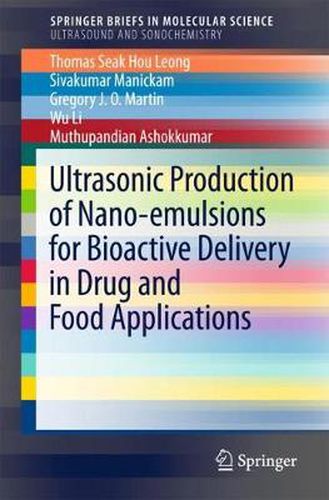Readings Newsletter
Become a Readings Member to make your shopping experience even easier.
Sign in or sign up for free!
You’re not far away from qualifying for FREE standard shipping within Australia
You’ve qualified for FREE standard shipping within Australia
The cart is loading…






This title is printed to order. This book may have been self-published. If so, we cannot guarantee the quality of the content. In the main most books will have gone through the editing process however some may not. We therefore suggest that you be aware of this before ordering this book. If in doubt check either the author or publisher’s details as we are unable to accept any returns unless they are faulty. Please contact us if you have any questions.
This SpringerBrief provides an overview of ultrasonic emulsification and an update on recent advances in developing stable emulsions for the creation of novel drugs and functional foods, with a focus on bioactive delivery in these products.
Emulsification is the process of combining two or more immiscible liquids to form a semi-stable mixture. These two liquids generally consist of an organic (oil) phase and an aqueous (water) phase that is stabilized by the addition of an emulsifier. Most common emulsions are of the oil-in-water (O/W) type, but can also be of water-in-oil (W/O) or even multiple emulsion types (i.e. double emulsions) in the form of water-in-oil-in-water (W/O/W) or oil-in-water-in-oil (O/W/O) phases. The formation of an emulsion requires input of energy to distribute the disperse phase in the continuous phase in small-sized droplets that are able to resist instability. There is great interest in the use of ultrasound to produce emulsions, as it is able to do so relatively efficiently and effectively compared to existing techniques such as rotor stator, high-pressure homogenization and microfluidization. The interaction of ultrasound with the hydrocolloids and biopolymers that are often used to stabilize emulsions can offer advantages such as improved stability or greater control of formed droplet size distributions.
$9.00 standard shipping within Australia
FREE standard shipping within Australia for orders over $100.00
Express & International shipping calculated at checkout
Stock availability can be subject to change without notice. We recommend calling the shop or contacting our online team to check availability of low stock items. Please see our Shopping Online page for more details.
This title is printed to order. This book may have been self-published. If so, we cannot guarantee the quality of the content. In the main most books will have gone through the editing process however some may not. We therefore suggest that you be aware of this before ordering this book. If in doubt check either the author or publisher’s details as we are unable to accept any returns unless they are faulty. Please contact us if you have any questions.
This SpringerBrief provides an overview of ultrasonic emulsification and an update on recent advances in developing stable emulsions for the creation of novel drugs and functional foods, with a focus on bioactive delivery in these products.
Emulsification is the process of combining two or more immiscible liquids to form a semi-stable mixture. These two liquids generally consist of an organic (oil) phase and an aqueous (water) phase that is stabilized by the addition of an emulsifier. Most common emulsions are of the oil-in-water (O/W) type, but can also be of water-in-oil (W/O) or even multiple emulsion types (i.e. double emulsions) in the form of water-in-oil-in-water (W/O/W) or oil-in-water-in-oil (O/W/O) phases. The formation of an emulsion requires input of energy to distribute the disperse phase in the continuous phase in small-sized droplets that are able to resist instability. There is great interest in the use of ultrasound to produce emulsions, as it is able to do so relatively efficiently and effectively compared to existing techniques such as rotor stator, high-pressure homogenization and microfluidization. The interaction of ultrasound with the hydrocolloids and biopolymers that are often used to stabilize emulsions can offer advantages such as improved stability or greater control of formed droplet size distributions.